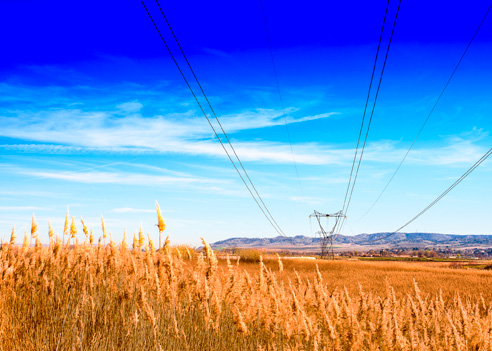For 40 years, we've been driving our country's economic and social progress. Four decades shaping Spain.
Red Eléctrica Group publishes a practical manual designed to guide towns in the creation of rural energy communities
- The "Manual for a rural energy community", available on the website of the company, contains the necessary information to design and implement this type of initiative, such as legal forms, financing, and operating rules.
- "Thanks to rural energy communities, the inhabitants of our villages are at the centre of a more democratic, sustainable and inclusive energy market", stated Beatriz Corredor.

The Red Eléctrica Group, with the support of the cooperative Megara Energía, has published a manual to help municipalities in rural Spain to create energy communities, resolving the doubts of their inhabitants, town councils, SMEs and other local stakeholders when it comes to setting up this type of participatory production and management project for collective self-consumption of renewable energy.
The Manual for a rural energy community (available only in spanish), which can be downloaded from the website of the Group, offers useful information and practical advice to expand the knowledge, partnerships and resources needed to design step by step and manage an energy community. Among other issues, it explains the most appropriate legal forms to set it up, its operating rules and the different financing alternatives available.
"The rural environment is key in an energy transition that must necessarily involve renewable energies and a greater role for citizens. Energy communities are the appropriate framework for this. Thanks to them, the inhabitants of our villages are placed at the centre of a more democratic, sustainable and inclusive energy market; they become actors involved in facilitating access to renewable energy; and they build a collaborative ecosystem between territories and initiatives capable of transforming and positively impacting from the local to the global", explained Beatriz Corredor, Chairwoman of the Red Eléctrica Group.
In this sense, as Joan Groizard, Director General of the IDAE, states in the introduction to the manual, "the impact of rural energy communities transcends the energy sector: they combat climate change, reduce energy poverty and promote social improvements in the community. They are undoubtedly a relevant figure in the rural environment, also because of their ability to address the demographic challenge: they not only boost local activity and generate employment, but also reduce energy bills and promote renewable generation, helping to generate clean and competitive environments and, thus, consolidating their populations. They are fully in line with the commitment of the Government to an equitable energy transition and social and territorial cohesion".
The manual also gives visibility to various initiatives existing throughout Spain, which have a common link in being projects that promote renewable energies to meet the needs and expectations of present and future generations who decide to live in rural areas, and which will allow them to move towards greater levels of self-sufficiency. Many of these initiatives are linked to traditional ways of life and customs in the use of water, biomass, sun, and wind.
Among them, we present the case of the association Hacendera solar de Castilfrío de la Sierra (Soria), the first rural energy community set up in Spain. Sponsored by the Red Eléctrica Group, the town council and the Megara Energía cooperative, this community is covering 69.84% of the municipality's electricity demand and reducing its carbon footprint by 4.79 t of CO2 eq. per year. The Castilfrío town council has saved almost 3,500 euros (64.27% of its total electricity expenditure) during the first year of operation of the community. The initiative is intended to be scaled up to the 16 municipalities of the Tierras Altas community.












